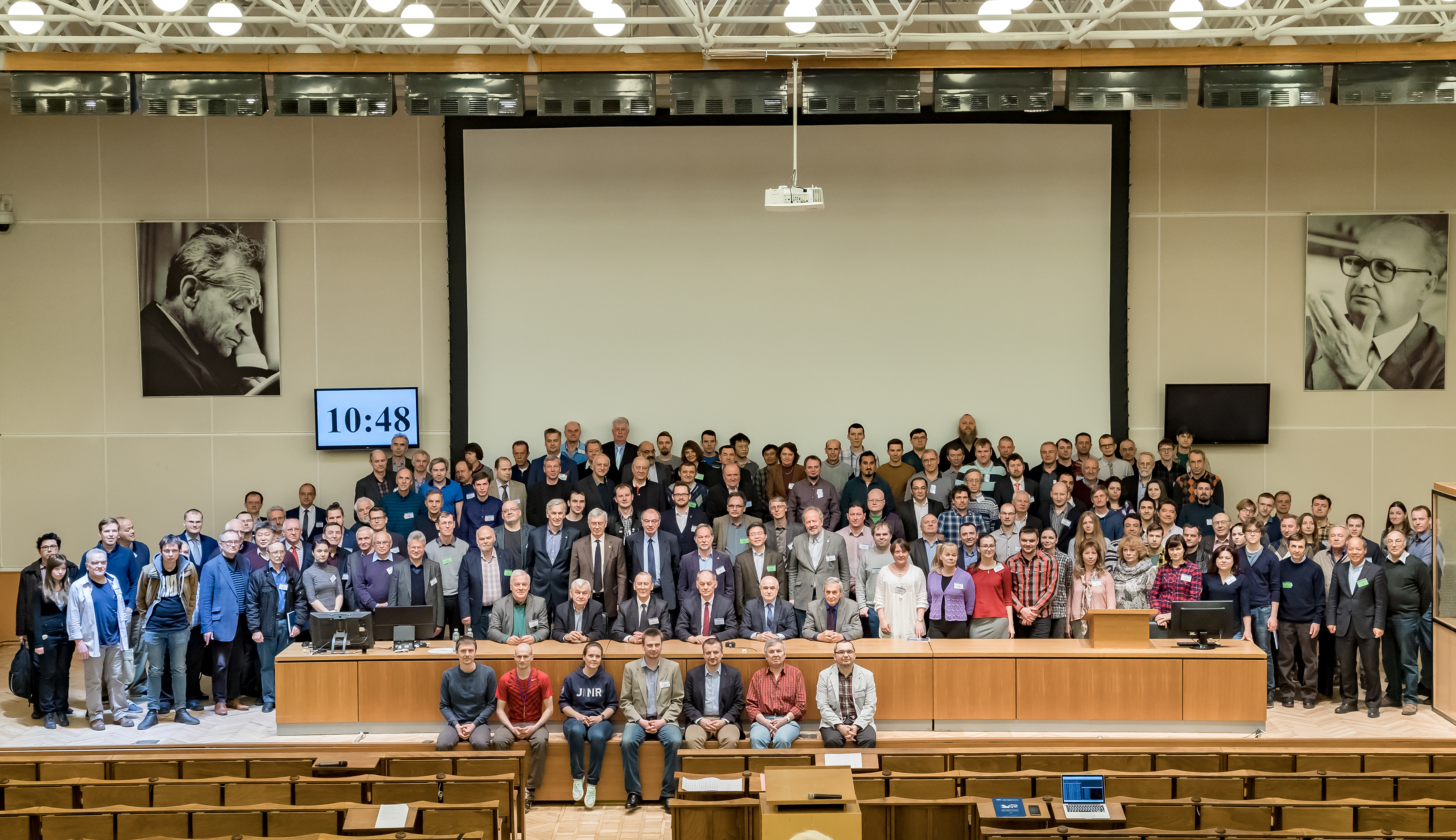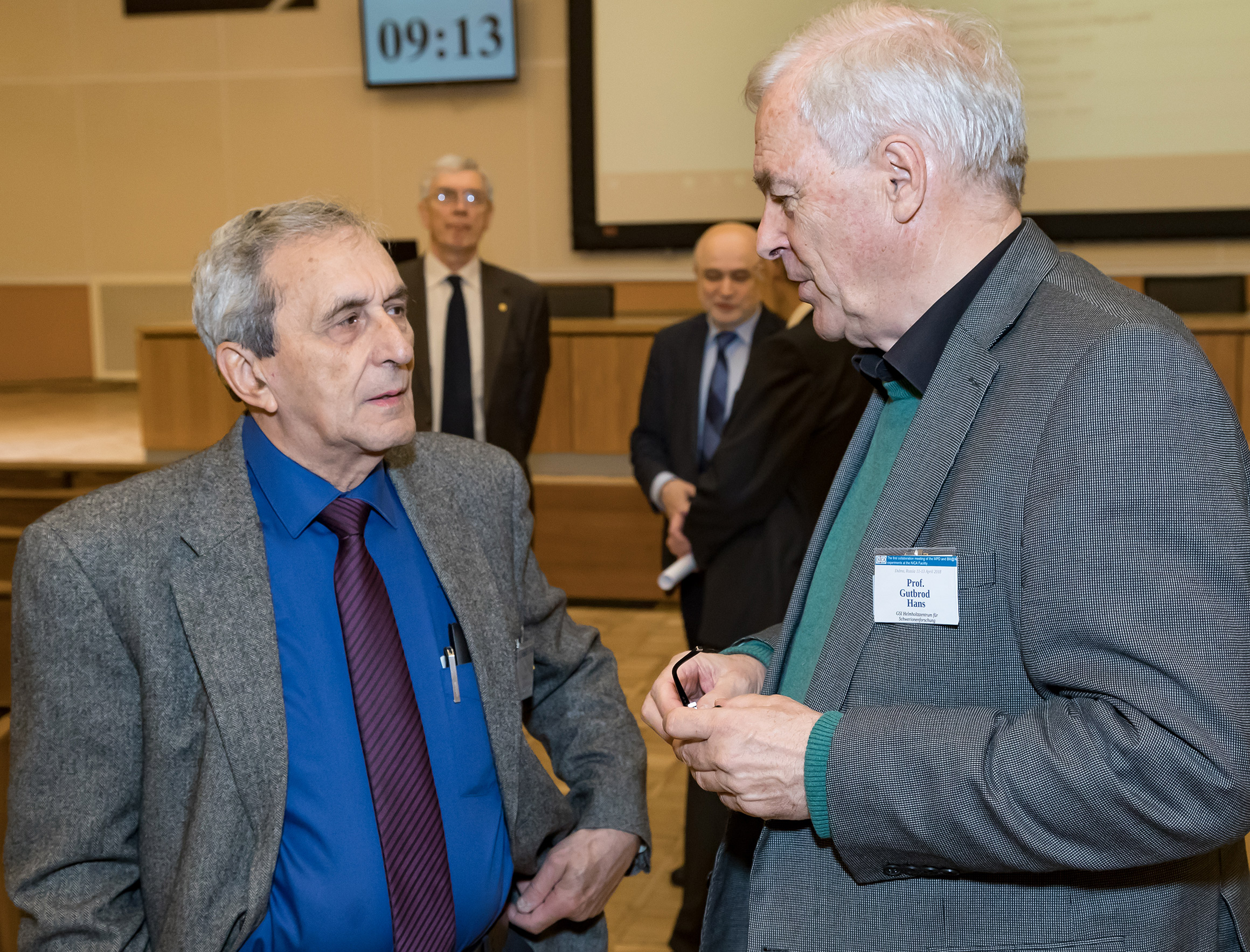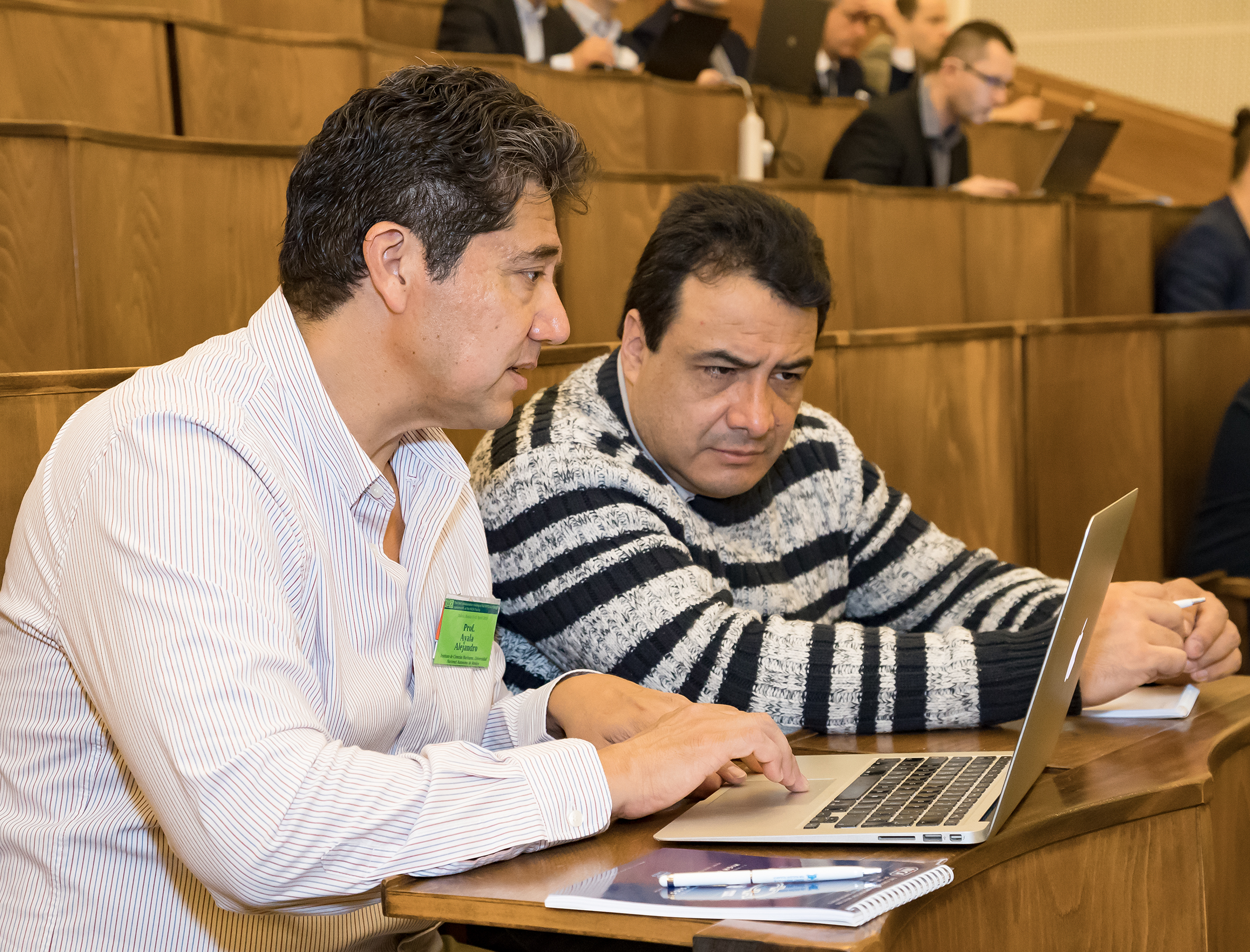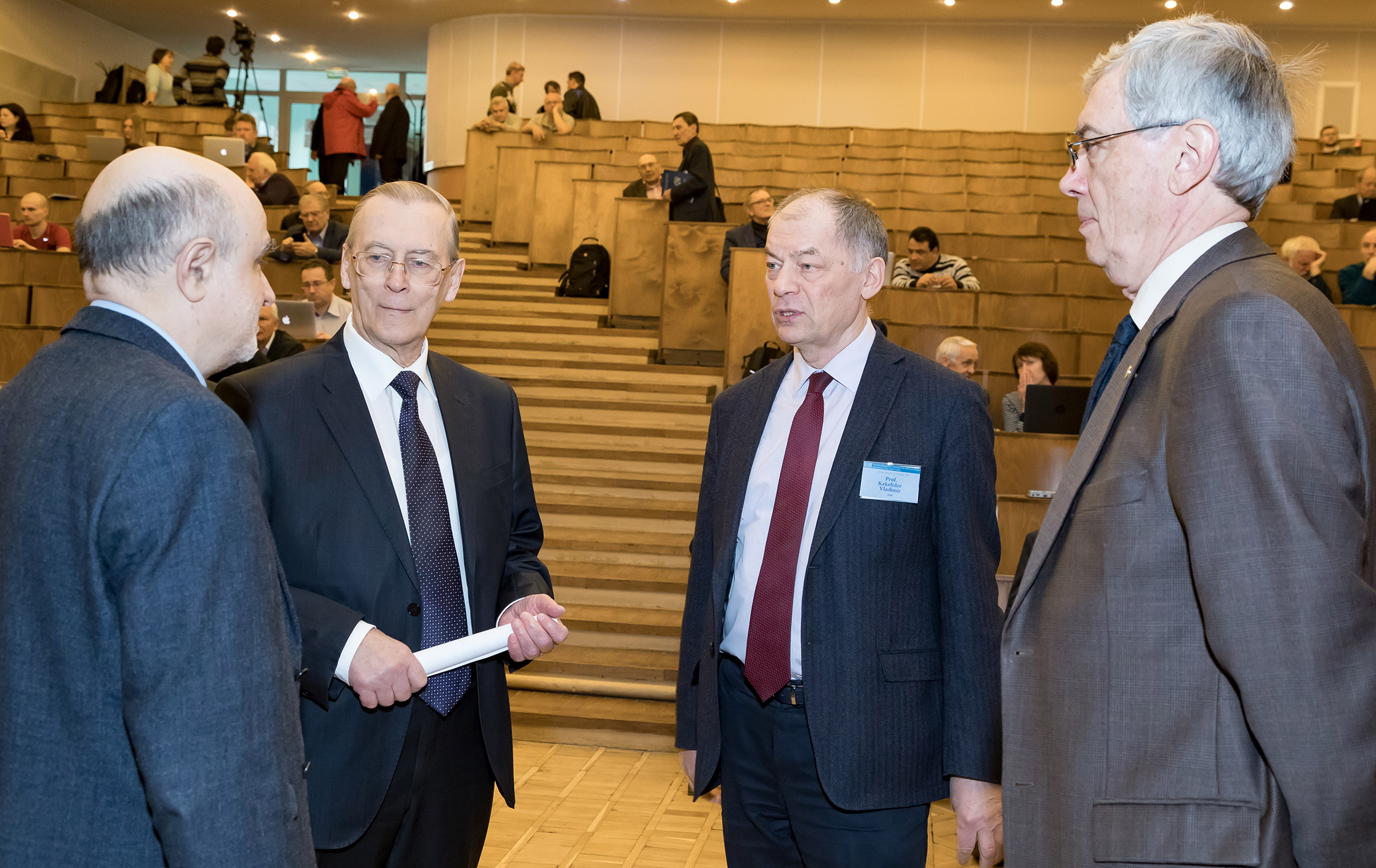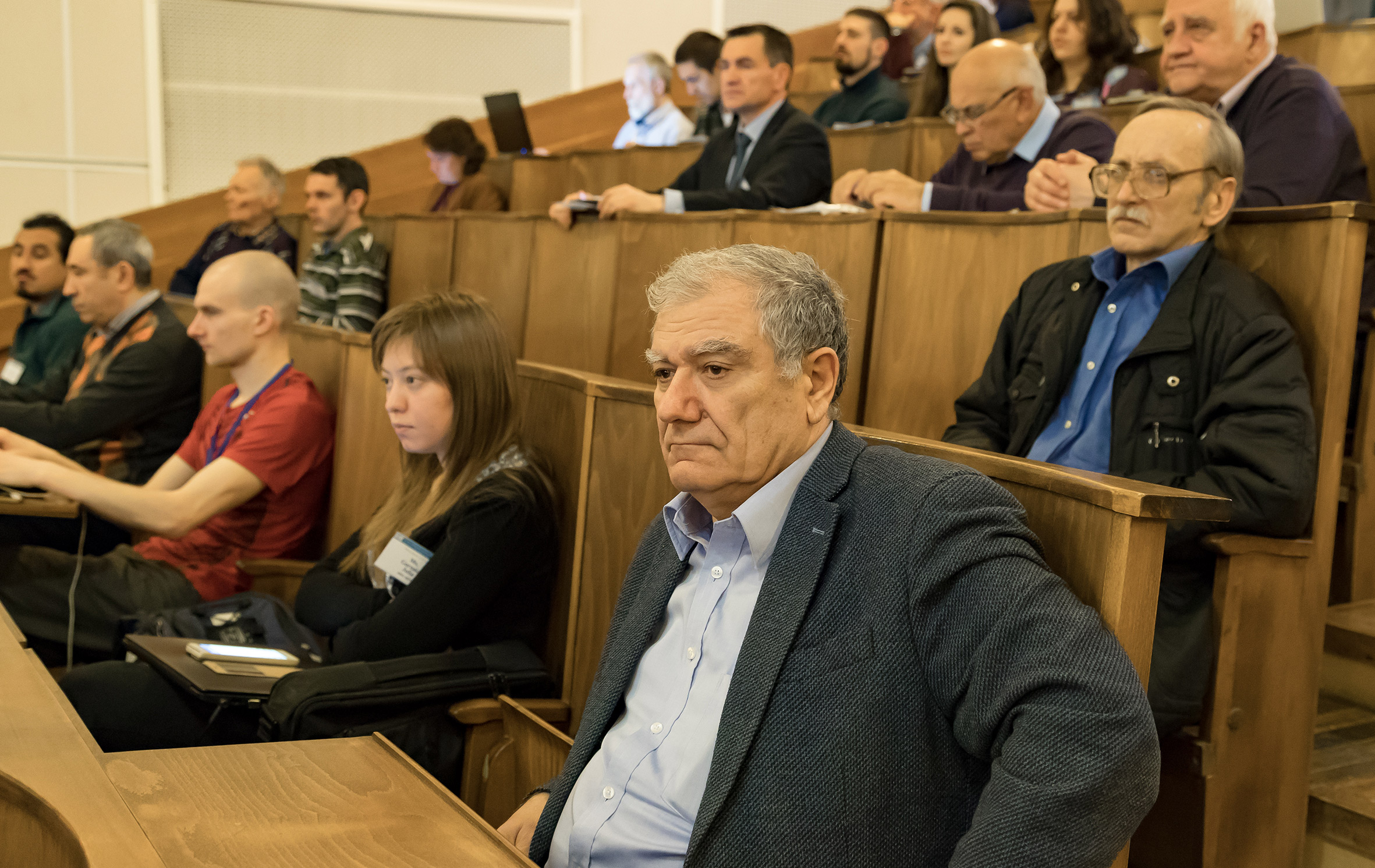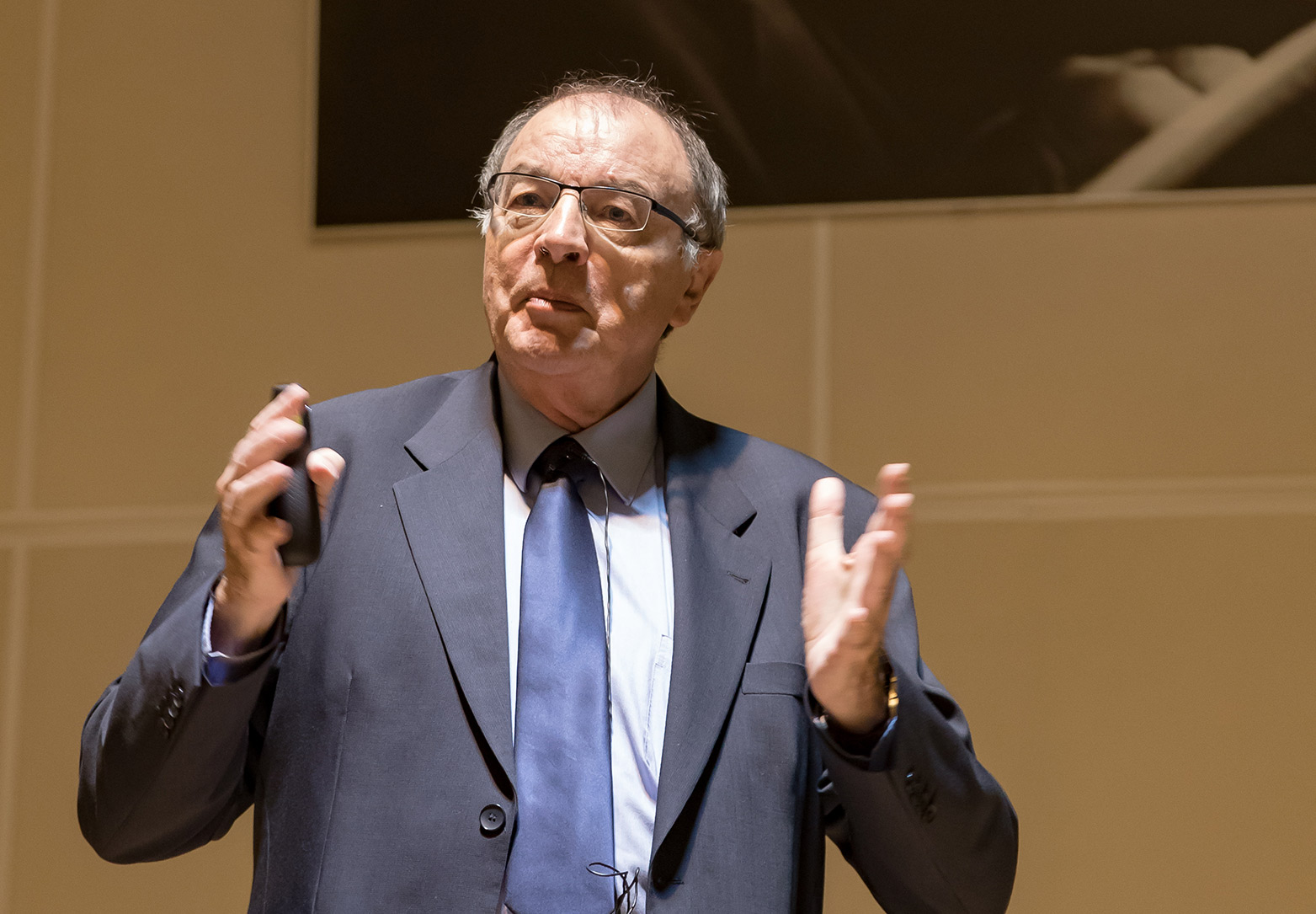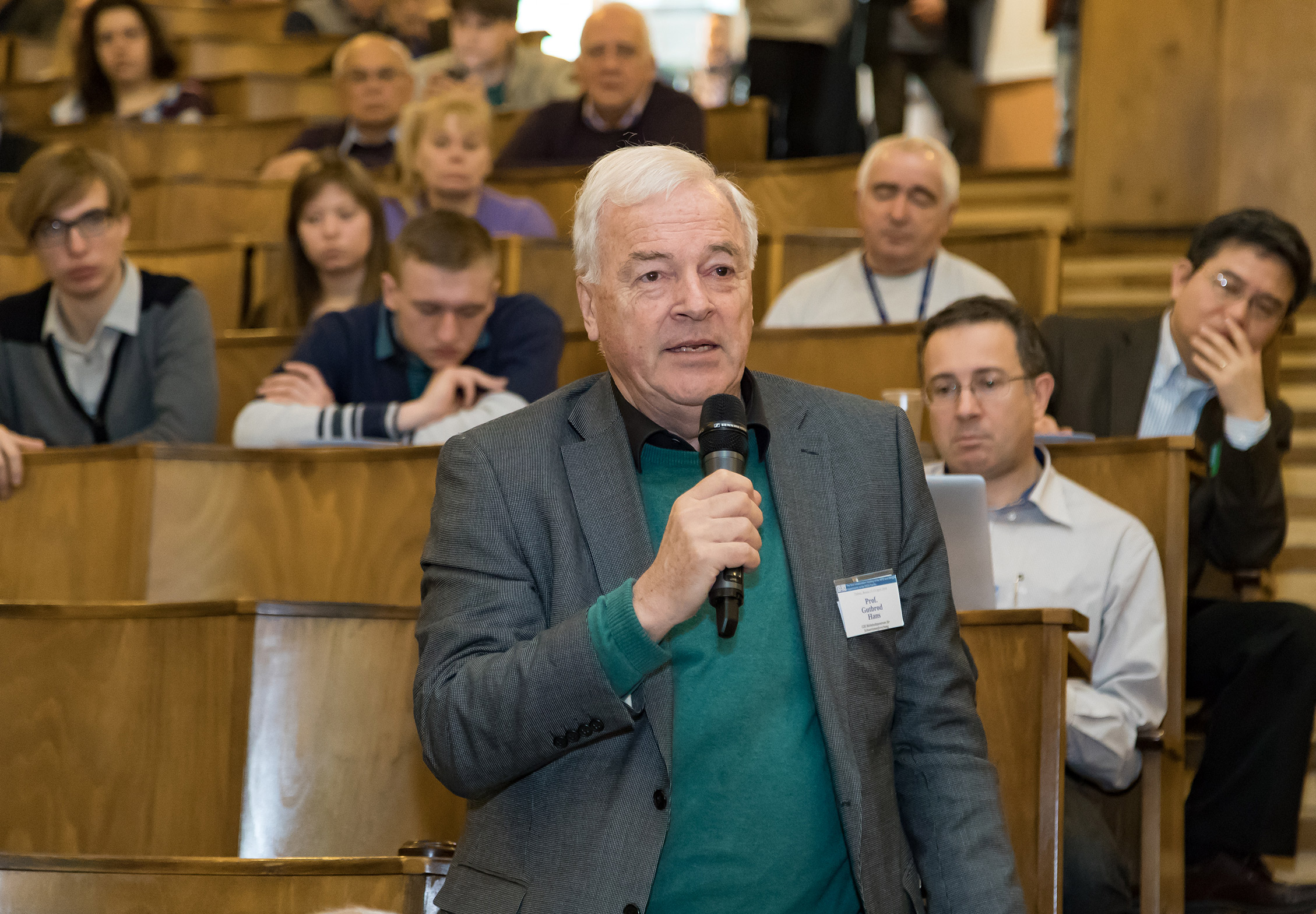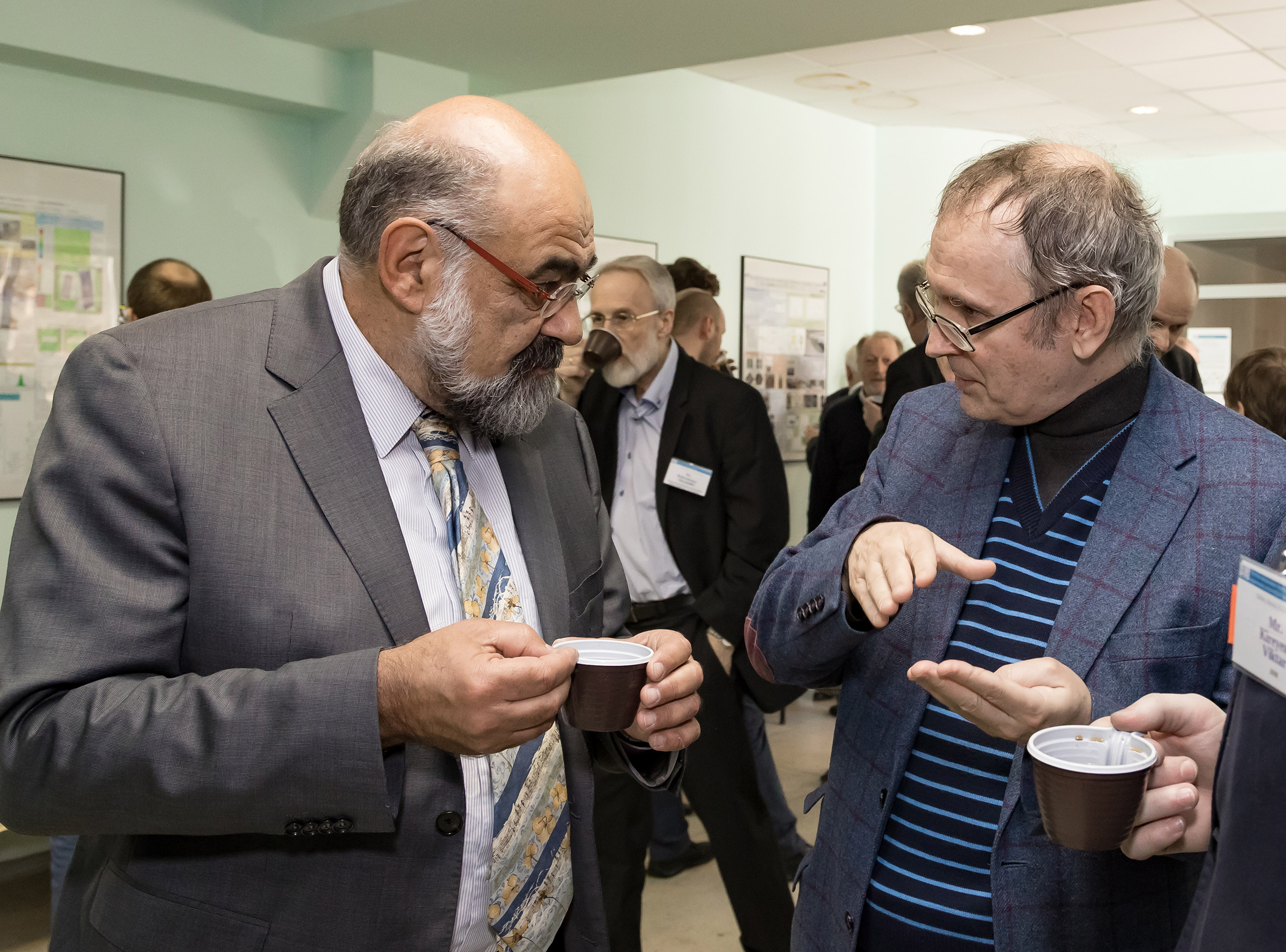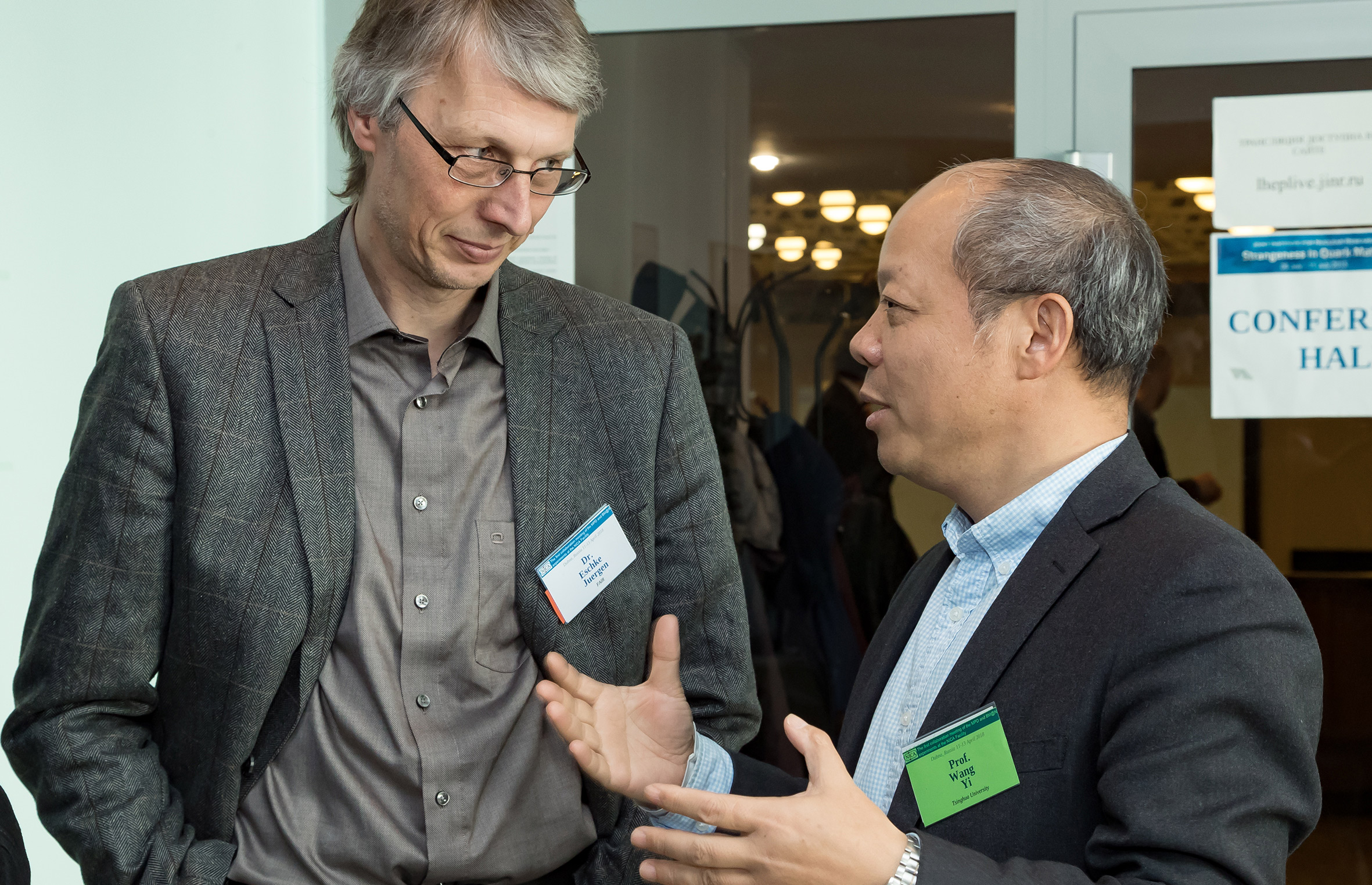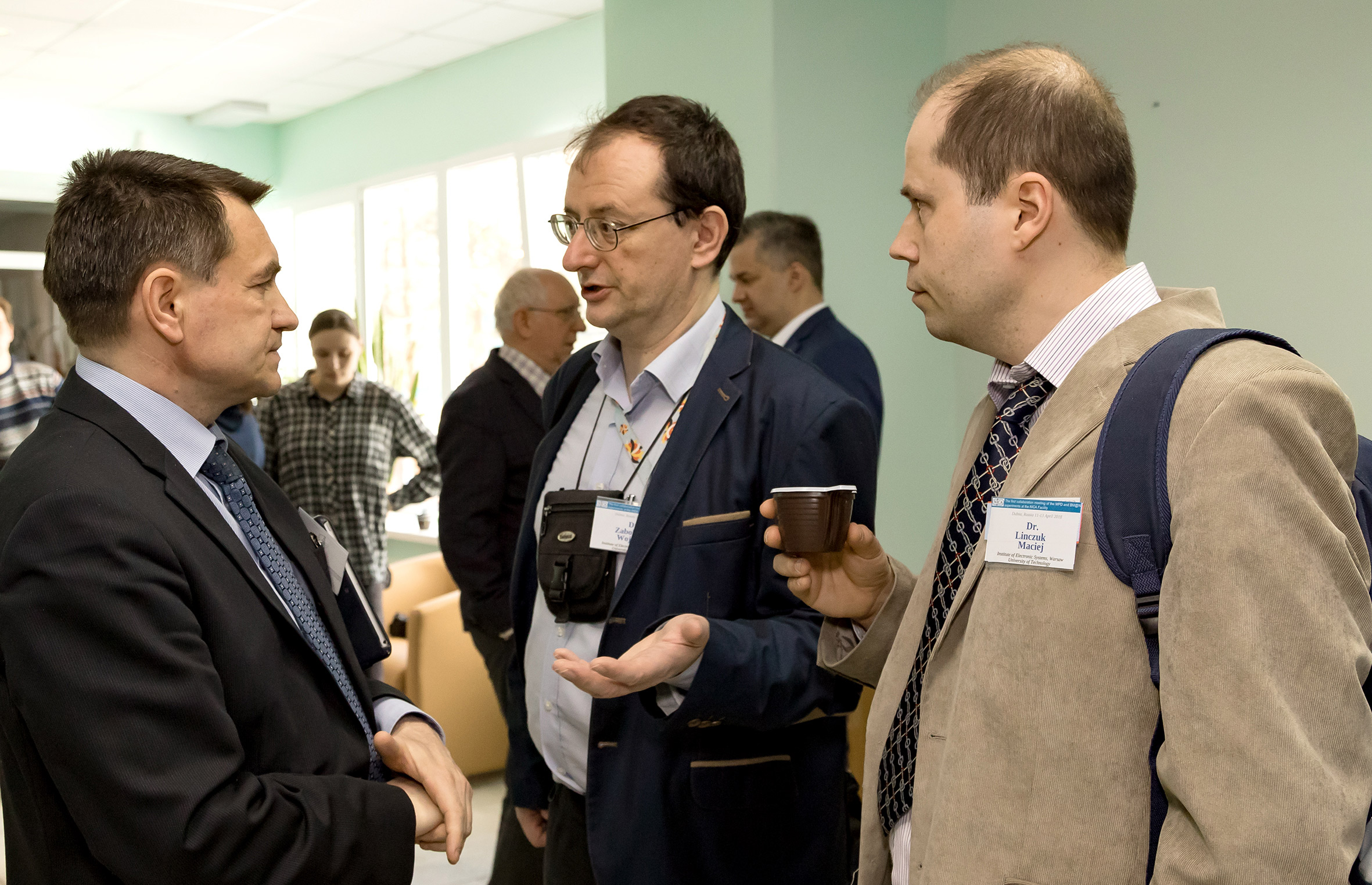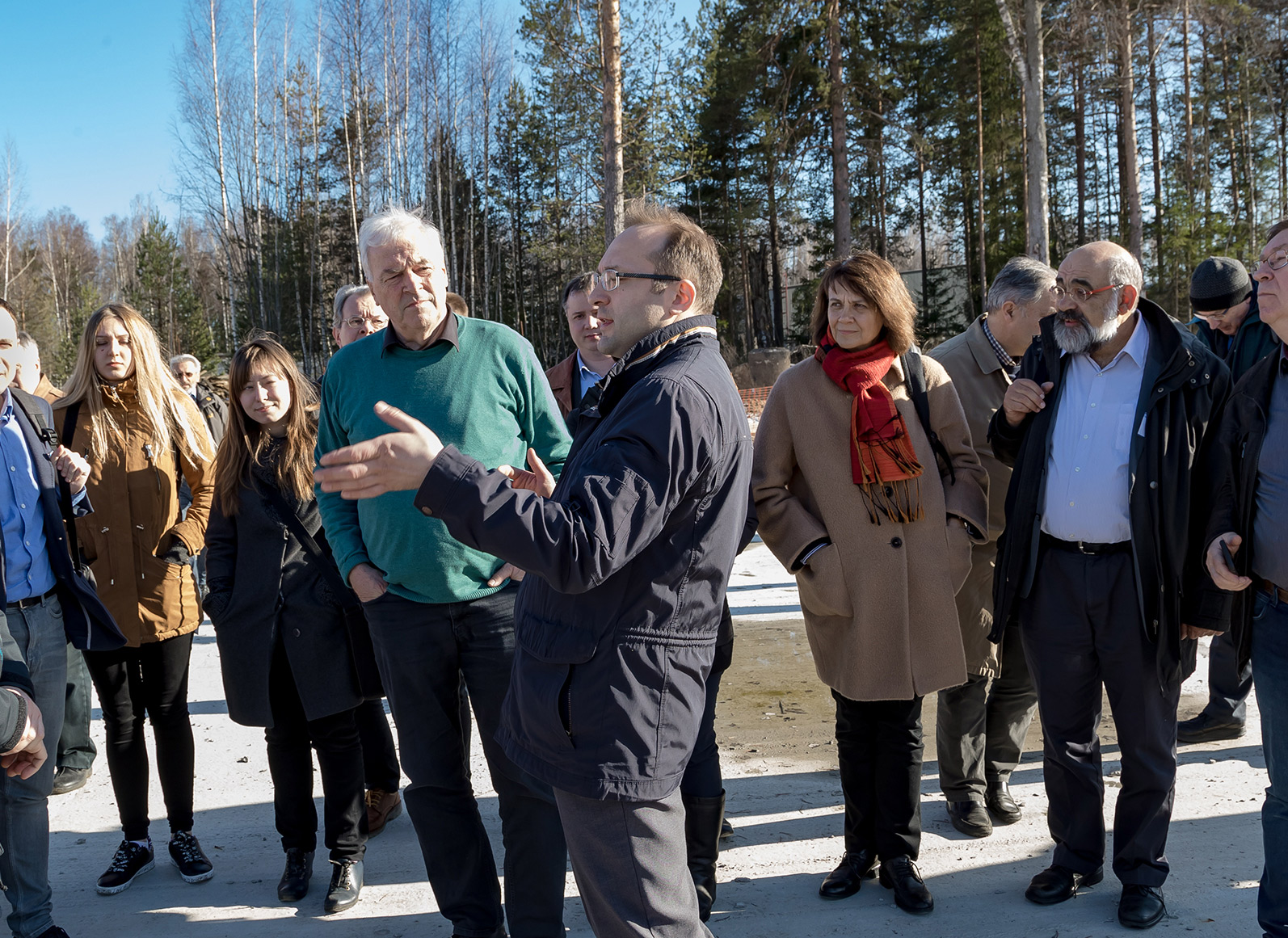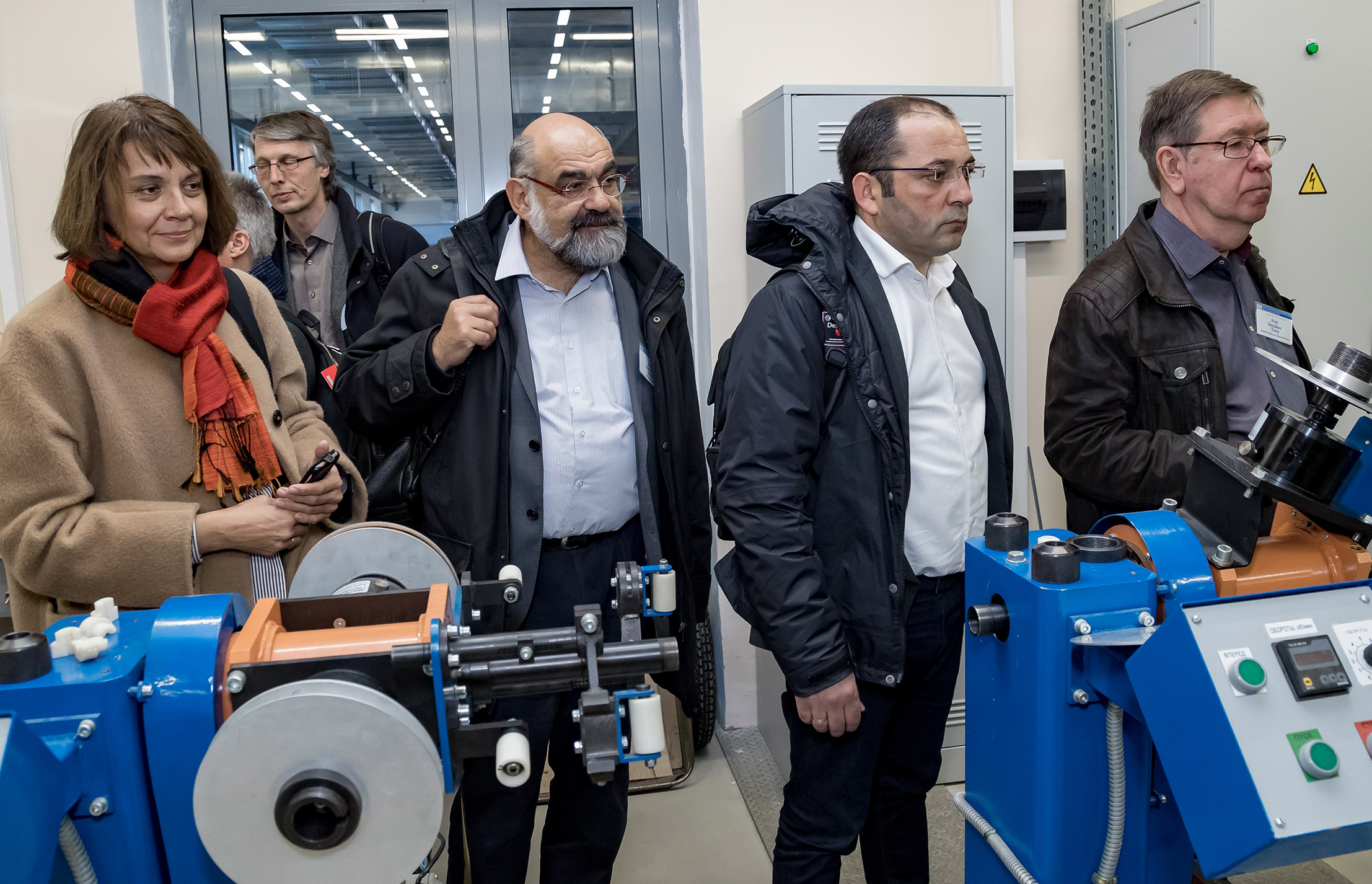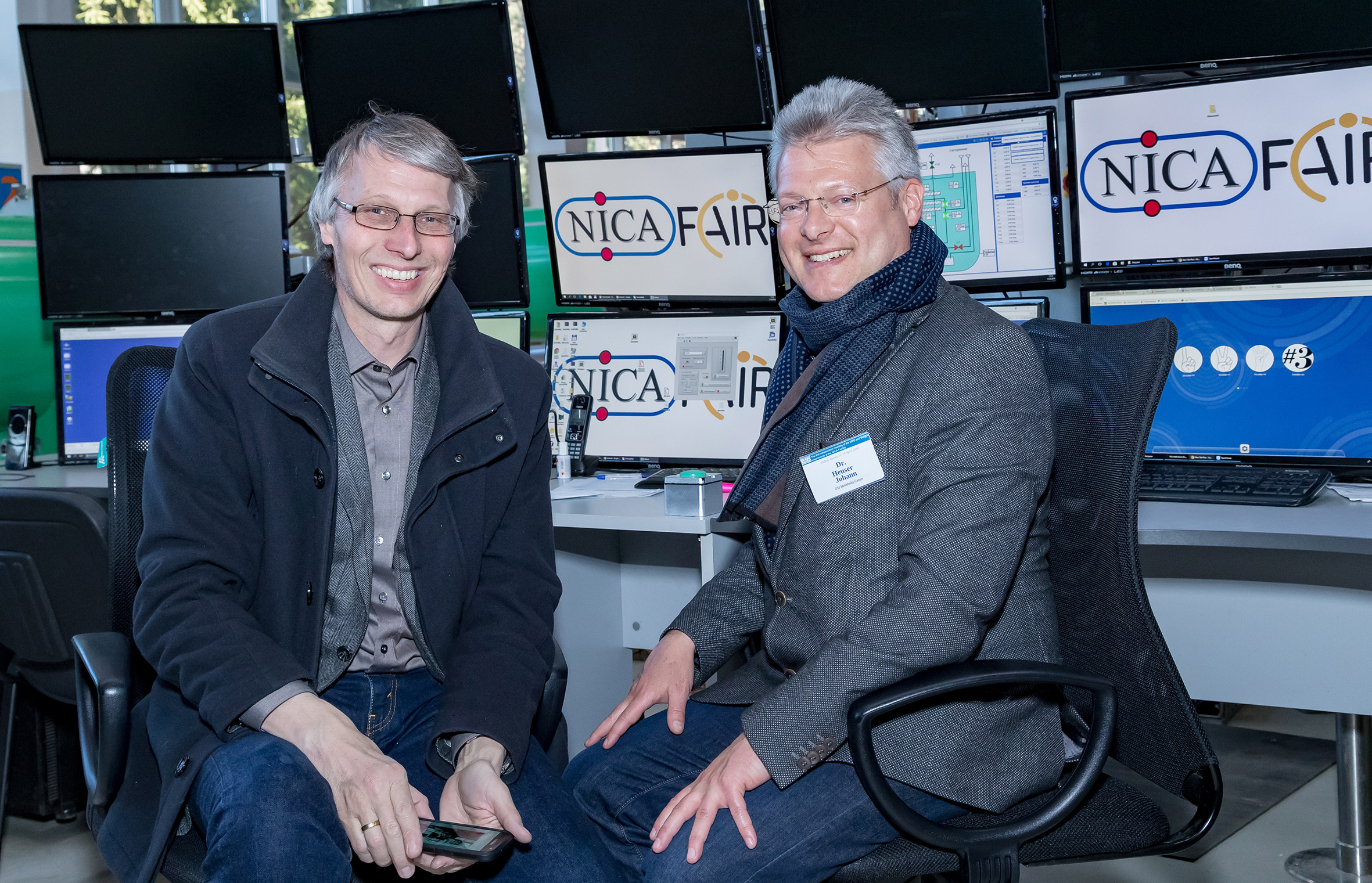V.D. Kekelidze: “Well organized collaboration is a key to success”
News, 24 April 2018
On 11-13 April 2018, the first Collaboration meeting of the MPD and BM@N experiments at the NICA Facility was held at JINR. About 200 participants including directors of scientific centres, heads of laboratories, world leading theoreticians came to Dubna to get acquainted with progress and plans on implementation of the NICA mega-science project as well as to discuss possibilities of joining efforts and resources. Representatives of more than 40 scientific centres from 19 countries participated in the event.
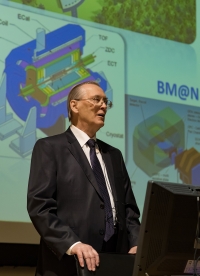
The meeting was opened by JINR Director Academician V.A. Matveev: “Today, we are witnessing a significant event, – Victor Anatolievich said to the journalists. – Potential participants of international collaborations, who will prepare and conduct experiments at the NICA facility, came to us. Nowadays, when the construction of the complex is carried out at a fast pace, money and equipment are not the most important issues; people and intellect are far more significant. Of course, we are greatly interested in new ideas, new approaches. We will be able to fulfill the task set by implementation of the NICA mega-science project only jointly.”
Two experiments, BM@N and MPD, are being already implemented with participation of the international community. As it has been organized so far, heads were appointed by the JINR Directorate. However, development of an international collaboration should be held in accordance with international laws and with establsihed procedures: the memorandum of understanding is expected to be signed, which will record obligations of all parties, it is necessary to approve regulations and founding documents, choose the governing body.
“Collaboration is a type of cooperation that requires additional resources, – JINR Vice-Director, VBLHEP Director V.D. Kekelidze said. – I think that the vital resource in modern world is intellect. Nevertheless, money is necessary too as far as it is impossible to apply intellect without money. A great financial contribution to the NICA project has been already made by both JINR and the RF Government, so we already have the basis. Unfortunately, that is not enough. Two countries are now considered to make a significant financial contribution, namely China and Germany. High-level negotiations are held in these countries and we are sure to obtain additional resources. We are also ready to welcome to our project those who do not have such opportunities or their opportunities are not so extensive. For example, Chile, Mexico and other countries. We invite those who are interested in our physics, who have got bright interesting results and are able to make an intellectual contribution.”
Interest of the international scientific community to research at the NICA complex is great. It is evidenced by both the list of participants gathered here for the first time and the number of reports. “I am here not for the sake of participation in the experiment, – Professor of the University of Nantes Jorge Aichelin said. – As a rule, theoreticians are not invited to experiments. The reason for that is quite simple: theoreticians should explain the data, but the data has not been officially available yet. However, the intense exchange between our organizations is facilitated, this cooperation is highly important to us.”
The BM@N experiment has been already launched, MPD will be started only at the end of 2020. Of course, there are more scientists engaged in the already operating facility, but the MPD experiment will provide more possibilities. Energy fields of these experiments are very interesting for physicists. If we consider that one experiment is carried out at the ejected beams and the other one uses colliding beams, then we realize that BM@N and MPD provide the widest range of possibilities for research. “I believe that it is a significant stage for the NICA project, – Professor of the Weizmann Institute of Science Itzhak Tserruya said. – Groups of scientists from all over the world – Europe, Asia, America – came here to facilitate a new collaboration and to participate in the MPD and BM@N experiments. Formation of such international body will be a new milestone in the project’s development.”
As V.D. Kekelidze put it, the first BM@N experiment at the fixed target started in its launch configuration, new detectors will be eventually added. In the course of the run at the Nuclotron that had finished on 3 April, 180 million events were recorded. To process them, several years are needed, but these will be physical results that will help to improve future collider experiments. Responding to the journalists’ questions about immediate plans, Vladimir Dimitrievich said: “The accelerator will be stopped for 1,5 – 2 years to technically eject the beams. So, we will analyse the obtained data. The BM@N experiment will be continued over 2 years at the ejected beam and in its full configuration. As for MPD, we are planning to finish its construction until the end of 2020. After that, the experiment will be launched at it.”
One more, the third, collaboration on the SPD experiment will be establsihed later. It will not be, of course, the last collaboration of the Joint Institute. That is why it is of high importance to work out the mechanism, consider all the aspects and gain experience of establishmnet of such international bodies. Following the words by V.D. Kekelidze, not only technically perfect detectors, good accelerators and beams are essintial for the NICA project. Proper organization is significant as well in getting high-level, accurate results. Well-organized collaboration is a key to success. “We want not only scientists to decide on their participation in the collaboration but organizations as well, – VBLHEP Deputy Director Yu.K. Potrebnikov said. – On the eve of this event, the meeting with a group of MEPhI staff members was held, MEPhI Rector M.N. Strikhanov came. We were discussing whether MIPhI would be able to become responsible for one of the subsystems, to develop and construct it or not. We want organizations to develop large units of the complex and then provide maintenance service for them and be engaged in their operation.”
The meeting continued for three days. In addition to plenary meetings, excursions to the NICA site, the Factory of superconducting magnets and detectors laboratories were organized. As a result of discussions, regulations for the MPD and BM@N collaborations that were supported by 29 organizations from 14 countries were elaborated. . A special committee chaired by I. Tserruya was elected for selection of candidates for the positions of the collaborations spokespersons. The elections are scheduled for autumn 2018 when the next meetings of the MPD and BM@N collaborations will be held in Dubna.
We express our deep gratitude to Yu.K. Potrebnikov and N.A. Molokanov for their support in preparing the materials
Galina Myalkovskaya, JINR Weekly Newspaper,
Photos by Elena Puzynina
